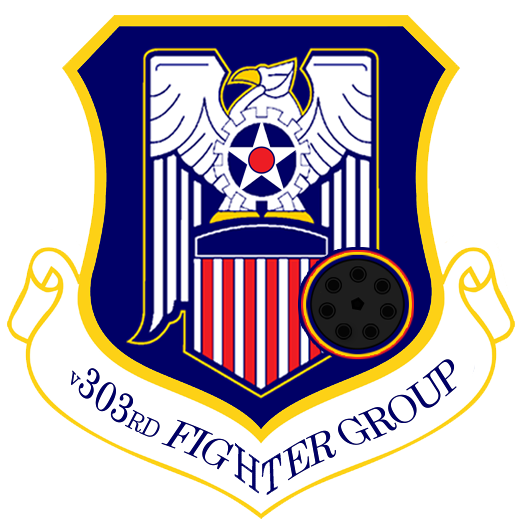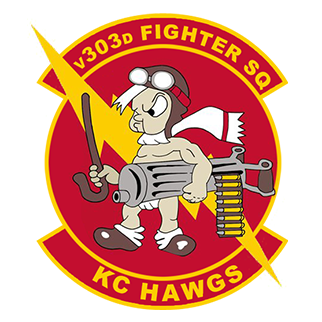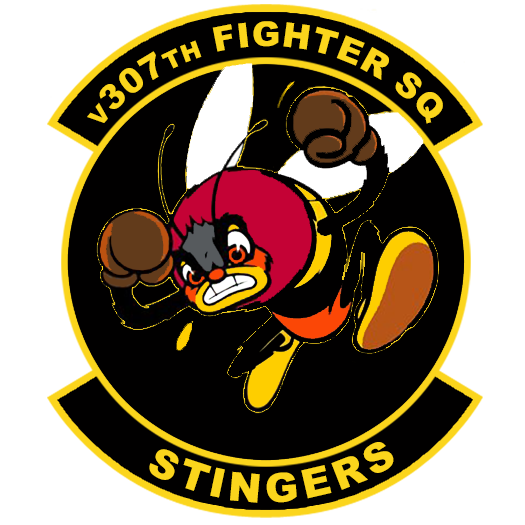Over the last few weeks I've seen multiple people ask on discord as well as through private messages what the training program within the v303rd Fighter Group looks like. Our goal within the v303 FG is to make the training challenging and enjoyable. Our approach is what we like to call milsim lite, meaning it is okay to make mistakes and we do not want our students to feel overwhelmed. We mirror real world USAF pilot training programs as close as we can without crossing the line when it comes to OPSEC and have adjusted them for what we are capable of doing within DCS World.
We do not “dumb down” the program for the Group but we do try to right size it. For example, the Surface Attack (SA) phase within the v303 FG is four blocks whereas the real-world SA phase can be upwards of 10 sorties and multiple academic sessions. Many of those real-world sorties repeat the same process over again, for DCS we feel that is redundant and can be counterproductive to people’s enjoyment.
In the v303 FG we do not have mandatory academic sessions, but we do offer presentations covering the basic material that Command and Instructors are willing to go over with student pilots. The expectation is student pilots review all applicable material themselves since the presentations do not cover everything (aka step 1 do this, step 2 do that). The amount of time to complete the training is up to the individual student. The group has timelines for completion of mandatory training but we also understand this is a hobby and life happens. For pilots that are actively trying to progress through the program we are happy to make exceptions when it comes to completion dates on a case-by-case basis.
The desired outcome is that our training program leads to members being proficient during our virtual combat deployments and offers enough optional training opportunities to keep members interested when not virtually deployed.
Students are required to fly at least twice a month during either our primary (Thursday evening) or supplemental (Sunday evening) flight nights. Although the minimum requirement is only two sorties a month it is expected that a student flies more often with their fellow students and/or other members of the group.
The v303 FG training program is broken down into three courses. Our pilot basic course (b-course) and some items within Mission Qualification Training (MQT) are mandatory. Optional MQT blocks are offered within the Group to provide our pilots additional opportunities to challenge themselves and learn new skills.
- B-Course: The course is designed to make the student pilot proficient as a wingman in all aspects of DCS [MDS] employment within the v303 FG. Student Pilots in B-Course will fly exclusively as a wingman except when conducting their initial instrument qualification. Once a student pilot graduates from DCS [MDS] B-Course they can choose to serve as a First Assignment Pilot (FAIP) and strictly train new B-Course students or continue their training track in Mission Qualification Training (MQT).
- MQT: DCS [MDS] MQT is additional training opportunities that are available within the v303 FS. Course concepts include 2- and 4-ship flight lead upgrades (FLUG), instructor pilot upgrade (IPUG), and FAC(A) qualifications (amongst other topics). Upon completion of all topics within MQT pilots can take part in DCS A-10C Weapons School.
- For the A-10C 2FLUG and Close Air Support (CAS) are mandatory.
- For the F-16C 2FLUG and Suppression/Destruction of Enemy Air Defenses (SEAD/DEAD) are mandatory.
- For the F-15E 2FLUG and Close Air Support (CAS) are mandatory.
- Weapons School: Weapons School’s goal is to train pilots how to control and exploit the air environment and how to plan large force exercises (LFE)/combat missions. Weapons School graduates serve as the advisors for the v303 FG, their respective squadron(s), and assist in drafting and validating tactical doctrine for the Group.
Grade | Explanation |
0 | Performance was unsafe or indicated lack of ability or knowledge. |
1 | Performance is safe but indicates limited proficiency. Unaware of and does not correct their mistakes. |
2 | Performance is essentially correct. Recognizes and corrects errors. |
3 | Performance is correct, efficient, skillful and without hesitation. |
4 | Performance reflects an unusually high degree of ability. |
Additionally once a student enters the Surface Attack Tactical portion of their training the expected proficiency for weapon employment is increased. For this reason the below breakdown in more detail the pilots proficiency in employing weapons.
Grade | Explanation |
0 | Employment was unsafe resulting in damage or loss of aircraft. |
1 | Employment was outside of parameters but did not result in damage or loss of aircraft. |
2 | + 10° dive angle, briefed attack heading, and no munition impact success. |
3 | + 5° dive angle, briefed attack heading, and no munition impact success. |
4 | On dive angle, briefed attack heading, and munitions impact success |
This is the current recruitment process and A-10C training program. Although the timelines in the images below may seem extreme we want our students to not feel a time crunch and we know real world has a way of getting in the way of participating in this hobby occasionally.
The v303 FG does not have a limit on how many airframes supported by the Group a member can be qualified on. We do require members to complete B-course and the mandatory MQT blocks for the airframe they originally joined to fly prior to working towards qualifying on another airframe.
Pilots working towards multiple qualifications are not required to complete SA 1-4 or NSA 1-2 in the additional airframe. They will however be required to fly a check ride with a member of Command or an Instructor pilot validating they can accomplish the minimum requirements such as start, taxi, takeoff, land, and air refuel the aircraft they wish to pursue another qualification in. Squadron Command will identify B-Course and MQT training blocks that multi qual pilots must complete. These items will be listed in the MDS specific 11-2. For example, someone coming from the A-10C to the F-16C will have zero experience with SEAD/DEAD.
We hope this post answers some of the questions people have been asking and on behalf of the v303 FG Command team, and all the members of the v303 FG, thanks for taking time out of your day to visit our forums and discord!
Last edited:



